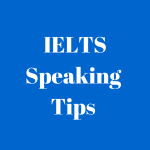Beginning level writing classes are challenging to teach because students have such a large number of challenges to deal with at the very beginning. For a beginning level student the instructions: Write a paragraph about your family, Write three sentences describing your best friend, etc. can be daunting to say the very least. Rather than beginning your writing class off with such an insurmountable task (from the eyes of the beginner), begin with some very concrete tasks leading up to those first few sentences, or a short paragraph.
Here are some of the most important first steps in writing that I find help beginning level students gain confidence in writing skills.
Contents
Start Small with the Nuts and Bolts
What are the nuts and bolts of writing? For many students knowing that a sentence begins with a capital letter and ends with a period is a major first step. Make sure to teach:
- Begin each sentence with a capital letter.
- End each sentence with a period.
- Use capital letters only with proper names, the pronoun ‘I’, and the first letter of the first word in each sentence.
- Each sentence contains a subject, verb and, usually, a complement.
- Basic sentence structure is Subject + Verb + Complement.
- Begin writing with simple sentences.
Focus on Parts of Speech
In order to teach writing, students must know basic parts of speech. Make sure to review what nouns, verbs, adjectives and adverbs. Ask students to categorize words in these four categories.
Taking time to ensure students understand the role of each part of speech in a sentence will pay off down the road.
Suggestions to Help with Simple Sentences
Once students have understood the nuts and bolts, help them begin writing by limiting their choices. I find it is a good idea to ask students to write sentences that focus on expressing certain ideas with very limited structures.
Here are some suggestions for writing tasks. Make sure students keep to simple sentences, compound and complex students are much too confusing at the very beginning. Sentences may be very repetitive in these exercises. However, once students gain confidence in a number of simple exercises they will be able to move on to more complicated tasks.
Simple Exercise 1: Describing Yourself
In this exercise, pre-teach standard phrases on the board such as:
My name is …
I am from …
I live in …
I am married / single.
I go to school at …
Use only simple verbs such as ‘live’, ‘go’, ‘work’, ‘play’, as well as set phrases with the verb ‘to be’. Once students feel comfortable with these simple phrases, introduce writing about another person with ‘he’, ‘she’, or ‘they’.
Simple Exercise 1: Describing a Person
Once students have learned basic factual descriptions, move on to describing people. In this case, help students by writing out different descriptive vocabulary on the board in categories. You can then use these categories with specific verbs to help narrow choices and instill confidence. For example,
Physical Appearance
tall / short
fat / thin
beautiful / good looking
well-dressed
old / young
etc.
Personality
funny
shy
outgoing
hard-working
friendly
lazy
relaxed
etc.
Verbs to Use
Use ‘be’ with adjectives describing physical appearance
Use ‘have’ with physical attributes (long hair, big eyes, etc.)
Simple verbs such as: work, live, play, use, speak, go
Ask students to write about one person. As you check the students’ work, make sure that they are writing simple sentences and not stringing too many attributes together with commas, or by using ‘and’.
Simple Exercise 2: Describing an Object
Continue working on writing skills by asking students to describe objects. Use the following categories to help students classify words to use in their writing:
Shapes: round, square, oval, etc.
Color: red, blue, yellow, etc.
Textures: smooth, soft, rough, etc.
Materials: wood, metal, plastic, etc.
Verbs: is made from / of, feels, is, has, looks like, looks
A variation to this exercise is asking students to write a description of an object without naming the object. Other students should then guess what the object is. At this point, it is better if students do not use multiple adjectives in a sentence which requires a good understanding of adjective order. It’s best to keep these simple at the beginning. For example:
This object is round and smooth. It is made from metal. It has many buttons. I use it to listen to music.















